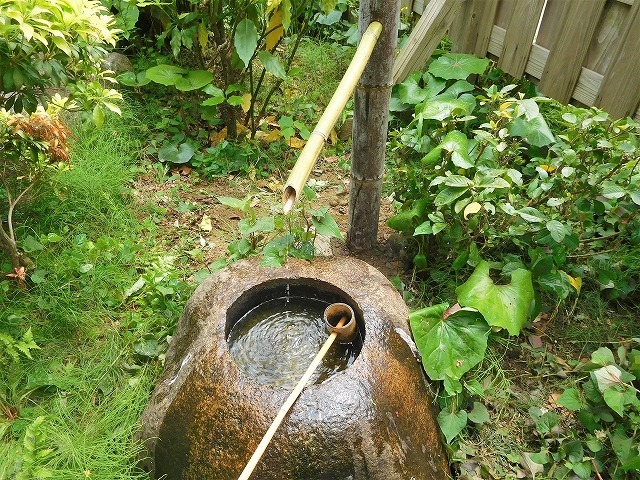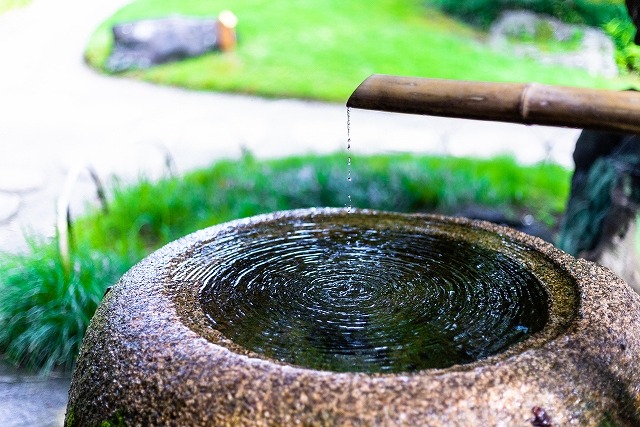One of the most iconic features of a Japanese garden is the tsukubai, or stone wash basin. A stone stone wash basin is a stone that holds water and is used for washing hands, but the word “wash basin” means to squat with your body rounded. In other words, it is a tool used to draw water and wash one’s hands while squatting and keeping one’s posture low.
It is more convenient to make it large enough to wash hands without forcing the posture all the way down. However, it makes sense to make it low.
This is because the stone wash basin is one of the facilities used in the etiquette of the chanoyu. In chanoyu, all guests are treated equally, even the lord. At the stone wash basin on the way to the tea room, all people purify themselves by keeping their backs low, bowing their heads, and rinsing their hands and mouths. For this reason, the stone wash basin is sized to be used with a low posture.

The stone wash basin was invented and installed by Sen no Rikyu, the great master of the wabi and sabi style of tea ceremony, and became an indispensable facility in the tea garden. Since then, they have always been placed as an atmospheric feature of Japanese gardens.


